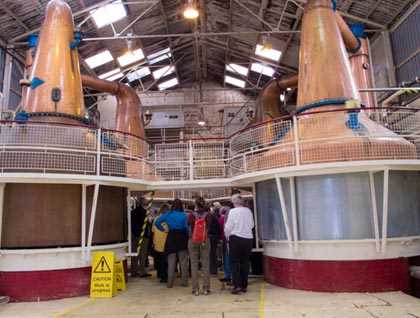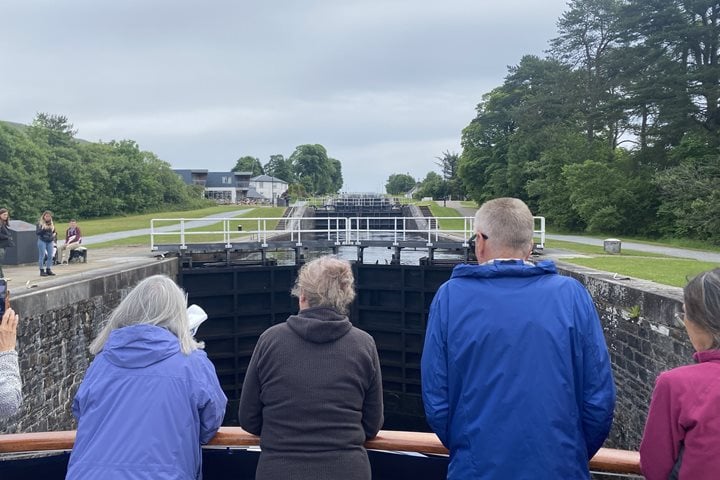After spending the night at the coastal town of Oban, Lord of the Glens set sail for Corpach and the entrance to the Caledonian Canal. The ship cruised through the Firth of Lorne to enter the long, scenic Loch Linnhe. A few terns and gannets wheeled back and forth across the dark water. Then someone spotted a white-tailed eagle, its eight-foot wings spread wide, soaring overhead. This rare bird was extirpated in Scotland but has now been re-introduced from Norway.
As we continued sailing, naturalist Stewart Aitchison attempted to unravel the long, complex geologic history of Scotland. Some of the oldest rocks on earth are exposed here as the Lewisian Gneiss, nearly three billion years old. These dark, tortured layers display their ancient age.
Next, expedition leader Steve Blamires gave an overview of the Jacobite Rebellion led by Bonnie Prince Charlie in 1745-46. This ill-fated attempt to regain the throne will be a recurring theme over the next few days of our voyage as we head for the battlefield of Culloden.
During lunch, we left the sea loch and entered the Caledonian Canal, built between 1803 and 1822. The canal's purpose was to allow ships to avoid the longer and more dangerous voyage around the north end of Scotland. After docking, we coached to the base of the highest mountain in the U.K., Ben Nevis, where we were given a tour of the Ben Nevis Distillery. And, of course, we finished with a taste of the “dew.”
From Fort William, we continued to beautiful Glenfinnan to visit the monument that commemorates the landing spot of Bonnie Prince Charlie and where he raised his standard in 1745. While at this lovely spot, the Jacobite Steam Train passed over the West Highland Railway Viaduct, a scene now famous because of the Harry Potter films.







